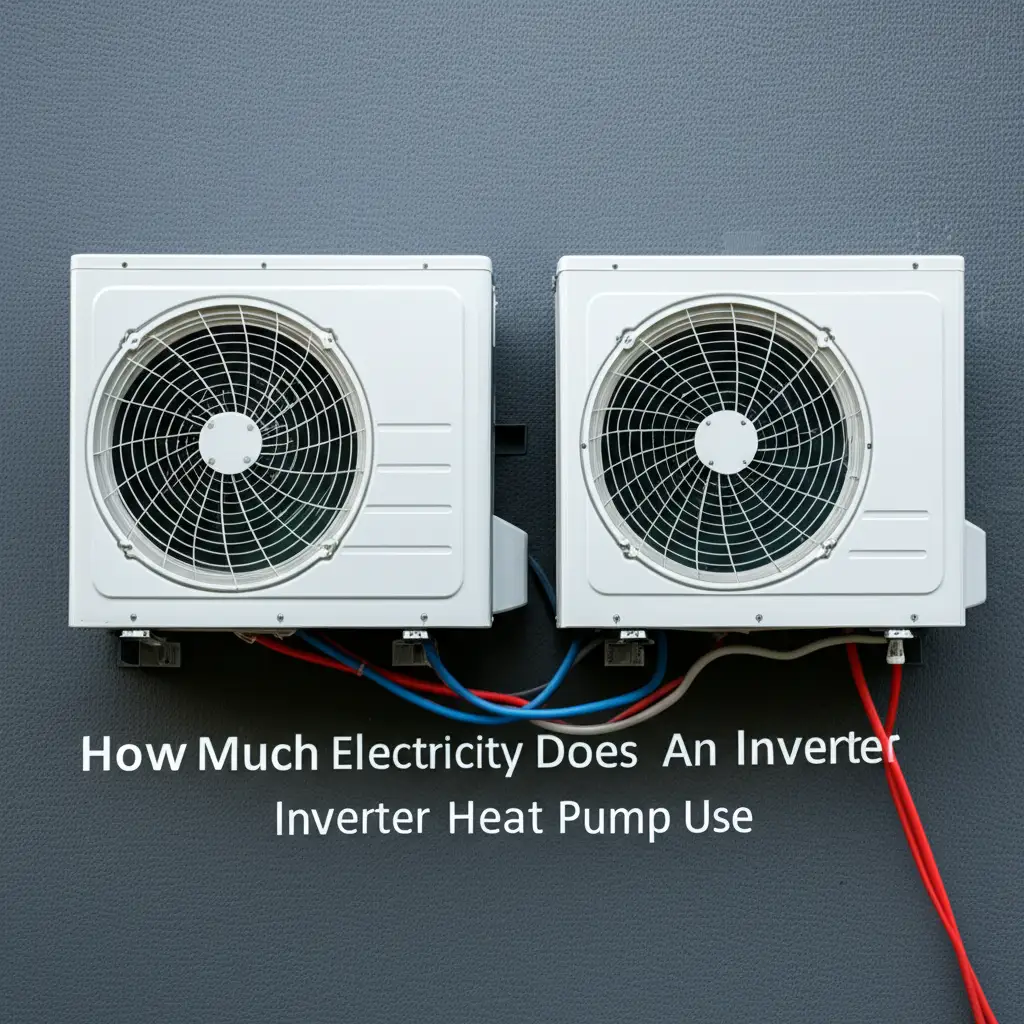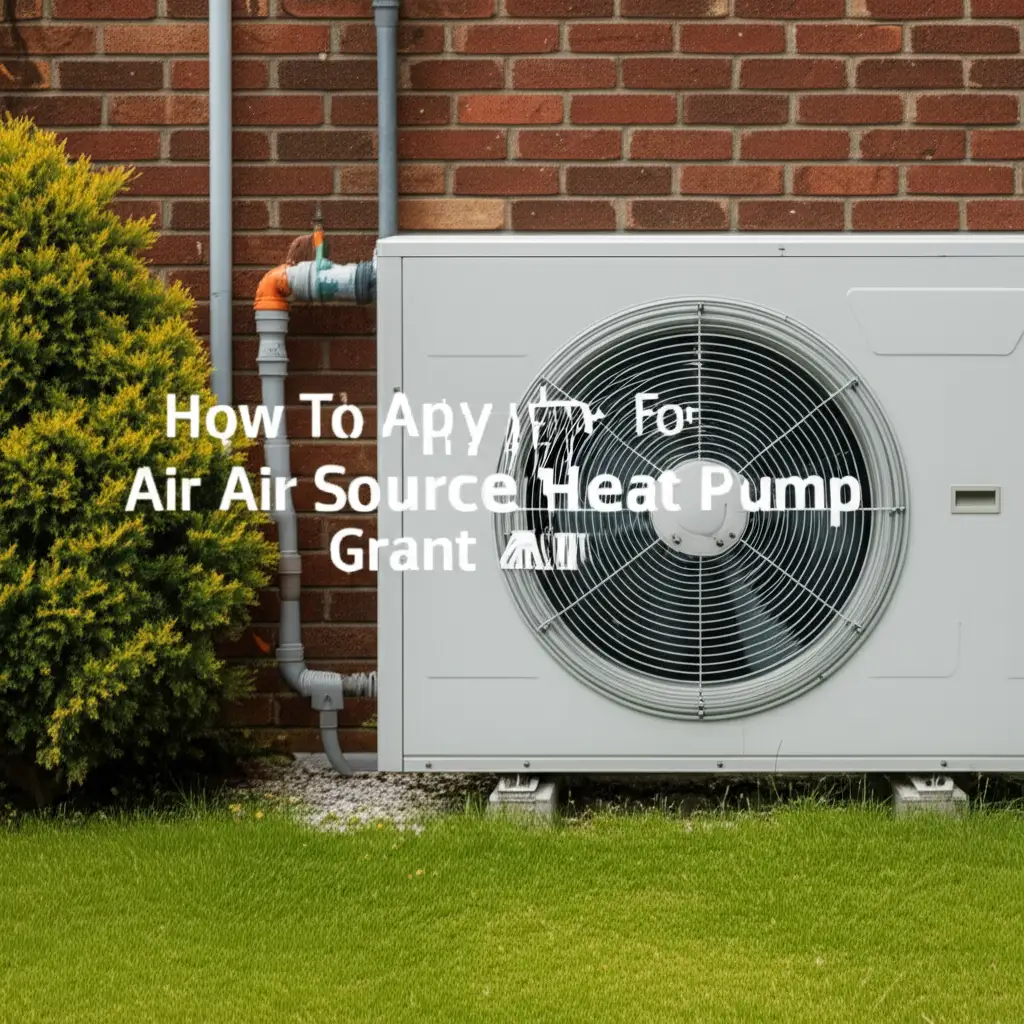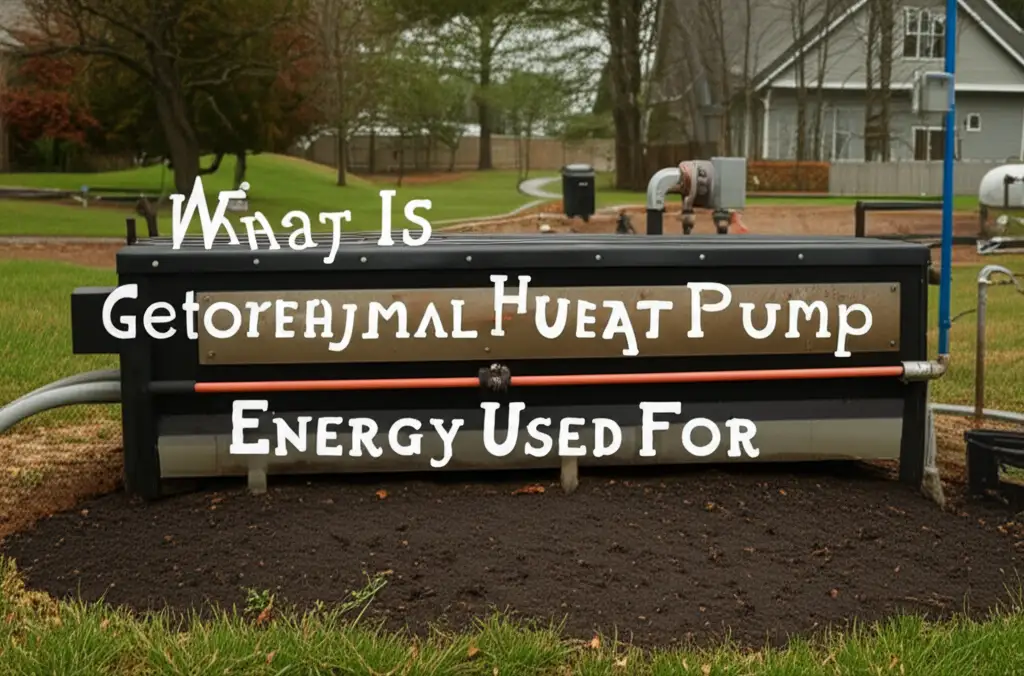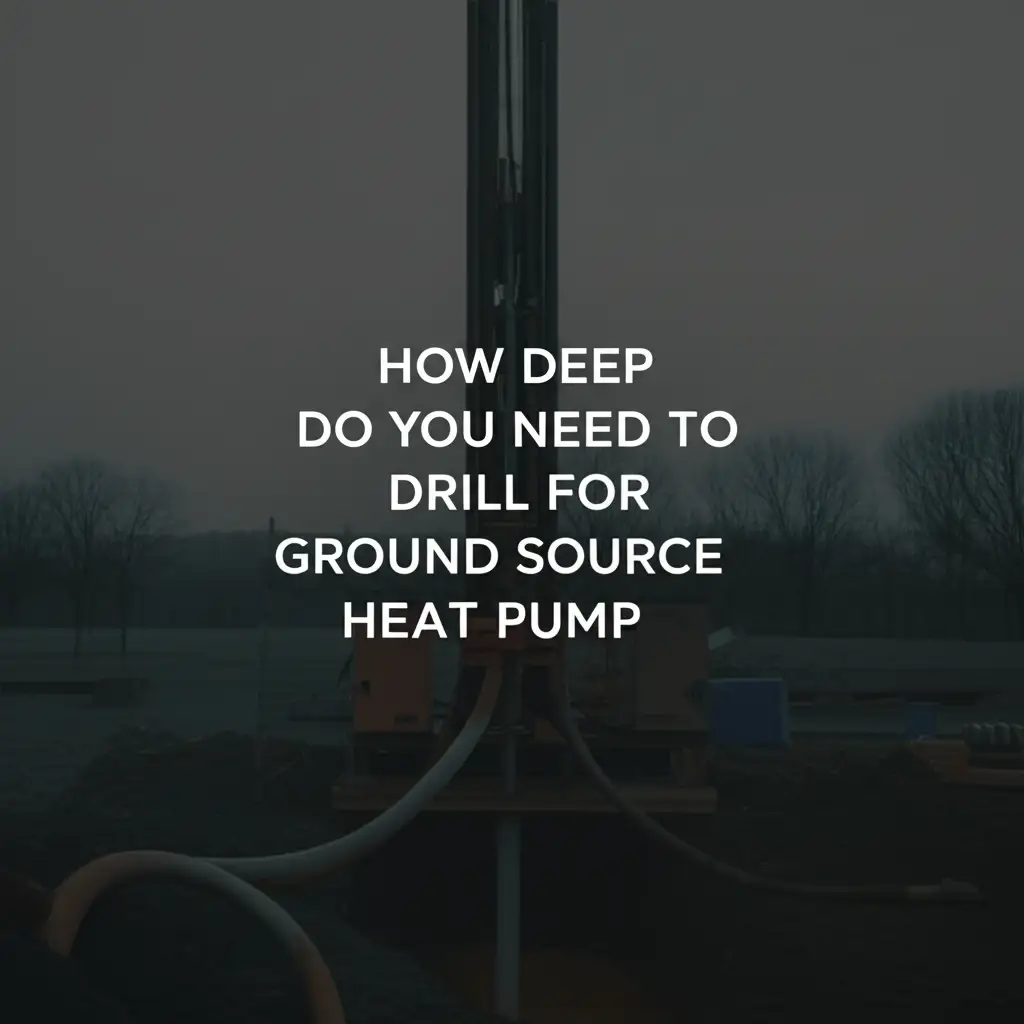· Todd Martin · Home Energy · 21 min read
Why Does My Ground Source Heat Pump Cost So Much To Run
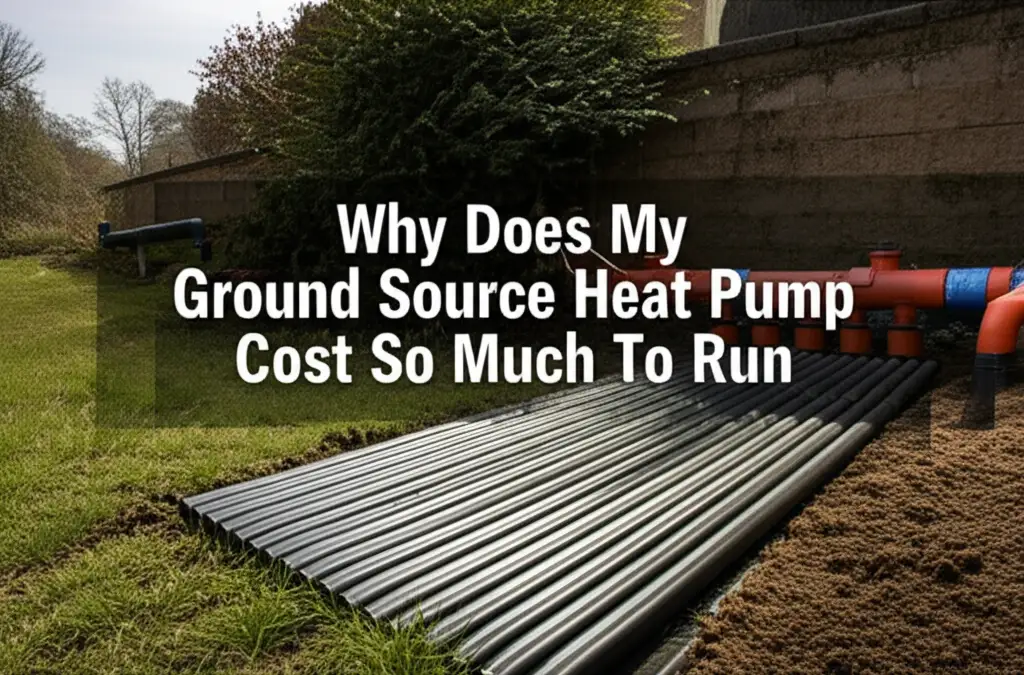
Understanding Your Ground Source Heat Pump Running Costs
When you invest in a ground source heat pump, you often hear promises of low running costs and significant energy savings. It can be a real surprise when your electricity bills seem higher than expected. I have heard this concern from many homeowners. You are not alone in wondering, “Why does my ground source heat pump cost so much to run?”
Several factors can impact how much your ground source heat pump costs to operate. These range from how the system was installed to your daily habits. It also includes the energy efficiency of your home. This article will explain the common reasons behind high ground source heat pump running costs. I will also provide practical steps you can take to lower them. Understanding these points helps you regain control over your home’s heating and cooling expenses. Let us dive into what makes your ground source heat pump run as it does.
Takeaway:
To lower your ground source heat pump running costs:
- Ensure your system is correctly sized and installed.
- Improve your home’s insulation and seal air leaks.
- Follow a regular maintenance schedule for your heat pump.
- Optimize your thermostat settings and use zoning if possible.
- Monitor your energy consumption and adjust habits.
- Address any issues with aging components or ground loops promptly.
A ground source heat pump can cost much to run due to poor initial installation, incorrect sizing, and inadequate home insulation. High electricity prices, lack of regular maintenance, or inefficient operational habits also increase costs. An aging system or issues with the ground loop can also reduce efficiency.
Initial Setup and Installation Errors
The start of your ground source heat pump’s life is very important for its long-term running costs. Many issues stem from the initial setup. Proper design and installation are critical. Mistakes made here can lead to high energy bills for years to come. I have seen how common these problems can be.
Improper Sizing
One major reason for high ground source heat pump costs is incorrect sizing. A system that is too small struggles to meet your home’s heating or cooling needs. It runs almost constantly, trying to catch up, using a lot of electricity. Conversely, a system that is too large cycles on and off too frequently. This “short cycling” is inefficient. It puts stress on the compressor, reducing its lifespan and increasing power usage.
A properly sized heat pump matches your home’s heat loss and gain. This ensures it operates at its most efficient point. An expert should conduct a detailed heat load calculation before installation. This step considers your home’s size, insulation, windows, and local climate. Without this precise calculation, your heat pump will likely work harder than it should. This leads directly to higher running costs.
Poor Loop Field Design
The ground loop is a vital part of your ground source heat pump system. It exchanges heat with the earth. Its design must match your home’s heating and cooling demands. A loop field that is too small cannot extract or dissipate enough heat efficiently. This forces the heat pump to work harder, consuming more electricity. It also causes the ground around the loops to become too cold or too warm over time. This reduces the system’s overall efficiency.
Proper loop field design considers soil type, moisture content, and ground temperature. It also considers the required heating and cooling load. Experts plan for adequate spacing between loops and sufficient depth. This ensures a stable heat source or sink for the heat pump. A poorly designed loop field can significantly raise your ground source heat pump running costs. It makes the system less effective at exchanging thermal energy with the ground.
Substandard Installation Practices
Even with correct sizing and design, poor installation can ruin efficiency. Leaks in the refrigerant lines reduce the heat pump’s ability to transfer heat. Improper connections in the ground loop can lead to poor flow or air pockets. These issues force the compressor and circulation pumps to work harder. They use more electricity to achieve the desired temperature.
Incorrect wiring or control settings also contribute to inefficiency. If the system is not balanced or calibrated correctly, it might run longer than needed. It might also operate at suboptimal temperatures. I always stress the importance of choosing certified installers. Their expertise ensures every component is installed to industry standards. This safeguards your investment and keeps running costs low. A professional installation prevents these costly mistakes.
Home Energy Efficiency and Insulation
Your ground source heat pump is only as efficient as the home it heats or cools. Even the best heat pump will struggle in a leaky, poorly insulated house. A well-sealed and insulated home holds conditioned air inside. This reduces the workload on your heat pump. I have found this to be a common overlooked area for homeowners.
Inadequate Home Insulation
Poor insulation is a major culprit for high energy bills, regardless of your heating system. Heat escapes through walls, ceilings, and floors in winter. It seeps in during summer. Your ground source heat pump must then work harder to maintain your desired indoor temperature. This constant battle against heat loss or gain consumes a lot of electricity. Think of it like trying to fill a bucket with a hole in the bottom.
Proper insulation includes adequate R-values in your attic, walls, and crawl spaces. It creates a thermal envelope that keeps conditioned air inside. This reduces the amount of heat your ground source heat pump needs to add or remove. Improving your home’s insulation is one of the most effective ways to lower your ground source heat pump running costs. It allows the system to run less often and more efficiently.
Leaky Windows and Doors
Just like walls, windows and doors are common culprits for energy loss. Drafty windows and poorly sealed doors allow a significant amount of air to infiltrate your home. This means conditioned air escapes, and outside air enters. Your ground source heat pump then works continuously to counteract this unwanted air exchange. This constant effort translates directly into higher electricity usage.
Checking for drafts around frames, sills, and weather stripping is important. You can easily seal gaps with caulk or weatherstripping. Upgrading to energy-efficient windows or adding storm windows also helps. These improvements prevent conditioned air from escaping. They also prevent outside air from entering. Sealing these leaks reduces the workload on your heat pump. This makes your home more comfortable and your energy bills lower.
High Thermostat Settings
While not a structural issue, keeping your thermostat set too high in winter or too low in summer significantly increases costs. Every degree you raise the heat in winter demands more energy from your ground source heat pump. Similarly, every degree you lower the cooling in summer increases energy consumption. Your heat pump works hard to reach and maintain these extreme temperatures.
I often advise homeowners to find a comfortable yet energy-efficient temperature. Small adjustments can make a big difference over time. Try lowering your thermostat by a few degrees in winter or raising it in summer. Even a one or two-degree change can lead to noticeable savings. Your ground source heat pump will not have to work as hard, which means less electricity used and lower bills.
System Maintenance and Performance Degradation
Even the best ground source heat pump needs regular care. Over time, components can get dirty or wear out. This reduces the system’s efficiency. Neglecting maintenance is a sure way to increase your ground source heat pump running costs. I have seen how a lack of simple tasks can lead to big problems.
Lack of Regular Servicing
A ground source heat pump is a complex machine. It needs professional check-ups to run at its best. Just like your car, regular servicing prevents small issues from becoming expensive repairs. A technician inspects all components, checks refrigerant levels, and cleans parts. They also ensure the system operates at its peak efficiency. Without these regular checks, minor problems can reduce performance. The heat pump then uses more electricity to deliver the same heating or cooling.
Scheduling annual maintenance helps identify issues early. This can be anything from a low refrigerant charge to a failing component. Addressing these promptly keeps your system running smoothly. It ensures your ground source heat pump delivers the expected energy savings. Neglecting service allows problems to worsen, leading to higher running costs and potential breakdowns. To understand the importance of regular care for heat pump systems, you can read more about how often do you need to service an air source heat pump.
Dirty Coils and Filters
The heat pump has coils that transfer heat. These coils can collect dirt and dust over time. Dirty coils act as an insulator. This prevents efficient heat exchange. The heat pump must then work harder to transfer heat from the ground to your home. This increased effort uses more electricity. Filters also become clogged with dust and debris. A clogged filter restricts airflow. This forces the fan motor to work harder. It reduces the amount of air that flows through the system.
Regularly cleaning or replacing air filters is a simple but important task. I usually recommend checking them monthly and replacing them every 1-3 months. Professional cleaning of the indoor and outdoor coils is also essential during service. Keeping these components clean ensures proper airflow and heat transfer. This simple maintenance step significantly impacts your ground source heat pump running costs. For more information on maintaining your system’s efficiency, consider reading about how to clean heat pump coils.
Refrigerant Leaks
Refrigerant is the substance that absorbs and releases heat within your ground source heat pump. It moves heat from the ground into your home. A refrigerant leak means there is not enough refrigerant in the system. When refrigerant levels are low, the heat pump struggles to perform its job. It must work harder and longer to achieve the desired temperature. This increased workload directly translates into higher electricity consumption.
A leak can also cause damage to the compressor. The compressor is the heart of the heat pump. A system running with low refrigerant can overheat the compressor. This can lead to its failure. Repairing or replacing a compressor is very expensive. Professional technicians can detect and fix refrigerant leaks. They can also recharge the system to the correct level. Addressing leaks promptly prevents higher running costs and costly repairs.
Operational Habits and Controls
How you operate your ground source heat pump greatly affects its running costs. Smart use of controls and understanding your home’s needs can save you money. Many homeowners overlook these simple adjustments. I have helped many people reduce their bills by changing how they use their systems.
Inefficient Thermostat Use
Your thermostat is the command center for your ground source heat pump. Using it inefficiently can quickly drive up your energy bills. Constantly adjusting the temperature or setting it to extreme highs or lows is wasteful. For example, turning the heat off completely when you leave and then blasting it when you return makes the system work harder. It struggles to recover the desired temperature quickly. This uses more energy than maintaining a consistent, moderate temperature.
Programmable or smart thermostats are excellent tools for efficiency. They allow you to set schedules for different times of the day or week. You can program the temperature to be lower when you are away or asleep. Then, it can rise before you return home. This prevents the system from running unnecessarily. It also avoids periods of extreme energy use. Proper thermostat programming ensures your ground source heat pump runs only when needed. This helps you manage your ground source heat pump running costs better.
Lack of Zoning
Zoning allows you to divide your home into different temperature control areas. You can then heat or cool only the rooms you use. Without zoning, your ground source heat pump heats or cools your entire house. This happens even if some rooms are empty. This wastes energy by conditioning spaces that do not need it. For example, why heat guest bedrooms during the day if no one is in them?
Implementing a zoning system with separate thermostats for different areas helps. This way, you can set back temperatures in unused zones. This significantly reduces the total area your heat pump needs to condition. It allows for more precise temperature control where it is actually needed. Zoning can lead to substantial energy savings. It makes your ground source heat pump operate more efficiently. It only heats or cools the active parts of your home.
Continuous Operation
While heat pumps are designed to run for longer cycles, truly continuous operation can indicate a problem. If your ground source heat pump runs non-stop, it might be undersized for your home’s heating load. It might also struggle due to poor insulation or air leaks. A system that never cycles off is constantly drawing power. This leads to very high electricity bills. It also puts undue stress on the components, shortening their lifespan.
If you notice your heat pump running without stopping for extended periods, investigate the cause. Check your insulation and seal any drafts. Ensure your thermostat settings are not too aggressive. If these do not help, have a professional evaluate the system. They can check for sizing issues or other inefficiencies. Addressing continuous operation is important. It prevents excessive energy consumption and ensures the longevity of your ground source heat pump. If you are experiencing high bills, learning about is the new heat pump in your house also pumping up your electricity bills can offer additional insights.
External Factors Affecting Running Costs
Beyond your system and your home, external conditions play a role in your ground source heat pump running costs. These are often outside your direct control, but awareness helps. Understanding these factors can help you anticipate fluctuations in your energy bills. I always tell people to consider the broader context.
Rising Electricity Prices
Ground source heat pumps use electricity to operate their compressors and pumps. If electricity prices in your area increase, your running costs will also rise. This happens even if your system maintains its efficiency. Utility rates can fluctuate due to various reasons. These include fuel costs for power generation, grid upgrades, and peak demand. These changes are often reflected in your monthly bill.
While you cannot control electricity prices, you can mitigate their impact. Consider opting for time-of-use tariffs if available. This allows you to run energy-intensive appliances during off-peak hours when electricity is cheaper. Investing in solar panels is another option to generate your own electricity. Monitoring your utility statements helps you understand energy price trends. This helps you plan your usage accordingly and manage overall ground source heat pump running costs.
Extreme Weather Conditions
Ground source heat pumps are very efficient. However, extreme weather conditions can still affect their performance. During very cold snaps in winter, the ground temperature can drop lower than usual. This reduces the temperature difference between the ground and your home. The heat pump must then work harder to extract enough heat. Similarly, during prolonged heatwaves in summer, the ground can warm up. This makes it harder for the system to dissipate heat from your home.
When the system works harder, it uses more electricity. While ground temperatures are more stable than air temperatures, extreme weather does have an effect. Your ground source heat pump may need to run for longer periods or at higher capacity. This happens during these times. Understanding this helps manage your expectations for energy bills during severe weather. It also highlights the importance of proper sizing and home insulation to cushion these effects.
Ground Loop Conditions
The ground loop’s performance directly affects your ground source heat pump’s efficiency. Problems within the ground loop can force the heat pump to work harder. This increases its energy consumption. Issues can include changes in soil moisture content. For instance, very dry soil can reduce heat transfer efficiency. The ground loop might also encounter areas with less favorable thermal conductivity.
Damage to the pipes in the ground loop, though rare, can also occur. A small leak in the loop could reduce the amount of fluid circulating. This impacts the heat exchange process. Over time, sediment buildup or air pockets within the loop can also reduce flow. This forces the circulation pump to work harder. Regular system checks can sometimes detect these issues. Maintaining optimal ground loop conditions is essential. It keeps your ground source heat pump running efficiently. This prevents higher electricity bills caused by poor heat exchange.
Aging System and Component Wear
No machine lasts forever. As your ground source heat pump ages, its components can wear out. This reduces overall efficiency and increases running costs. An older system may not perform as well as it did when new. I have seen many cases where age plays a significant role in higher bills.
Compressor Wear
The compressor is the heart of your ground source heat pump. It circulates the refrigerant and pressurizes it. Over many years of operation, the compressor can lose efficiency. Internal components wear down. This means it has to work harder to achieve the same heating or cooling output. A less efficient compressor draws more electricity. This leads directly to higher ground source heat pump running costs.
Signs of compressor wear include unusual noises or reduced heating/cooling performance. While professional servicing can extend its life, eventually a worn-out compressor needs replacement. This is a significant expense. Regular maintenance helps identify early signs of wear. This allows for proactive measures. Timely repairs can sometimes prevent complete failure. Understanding compressor health is key to managing long-term operational costs.
Pump Degradation
Ground source heat pumps rely on circulation pumps. These move fluid through the ground loop and also through your home’s distribution system. These pumps are constantly working. Over time, their internal components can wear down. They might become less efficient at moving fluid. A degraded pump might use more electricity to maintain the same flow rate. Or, it might fail to maintain adequate flow. Both scenarios reduce system efficiency.
You might notice strange noises from the pumps. You might also see a decrease in overall system performance. A professional technician can inspect the pumps during regular maintenance. They can check for signs of wear or impending failure. Replacing a worn pump is less costly than replacing a compressor. However, a failing pump still contributes to higher energy bills. Addressing pump issues ensures proper fluid circulation. This keeps your ground source heat pump running efficiently. For insights into pump maintenance, you might find information on how to clean pump parts helpful, even if the context is different.
Ground Loop Issues
While the ground loop itself is very durable, issues can arise over many decades. For example, a rare pipe failure or a compromise in the loop’s integrity can lead to leaks. This reduces the amount of fluid circulating. It impacts the heat exchange process. Over time, severe ground shifts or interference from other underground structures could also affect the loop.
A compromised ground loop means the heat pump cannot efficiently transfer heat. This forces the system to work harder. It uses more electricity to compensate. Detecting ground loop issues can be challenging. It often requires specialized equipment. Professional installers conduct pressure tests during initial installation. They also check for proper flow. If you suspect a ground loop issue due to unexplained high costs, consult a ground source heat pump expert. They can diagnose and address the problem.
Uncovering Hidden Energy Drainers
Sometimes, the high running costs of your ground source heat pump come from sources you might not immediately consider. These are often related to the overall heating system. They are not just the heat pump itself. Identifying these hidden drainers can help you reduce your bills further. I always encourage a holistic view of your home’s energy use.
Supplemental Heating Usage
Most ground source heat pumps are designed for maximum efficiency. However, during periods of extreme cold, they might struggle to meet the entire heating demand alone. Many systems include a supplemental electric resistance heater. This is often called “auxiliary heat” or “backup heat.” This heater kicks in when the heat pump cannot keep up. While useful, electric resistance heat is far less efficient than the heat pump. It uses a lot of electricity.
If your supplemental heater is running frequently, your ground source heat pump running costs will rise sharply. This can happen if the heat pump is undersized, poorly maintained, or if your home has poor insulation. Monitor your thermostat display for “auxiliary heat” indicators. If you see it too often, it signals an underlying issue. Addressing the root cause, such as improving insulation or servicing the heat pump, will reduce reliance on this expensive backup.
Distribution System Issues
Your ground source heat pump produces heated or cooled air or water. This needs to travel throughout your home. The distribution system, usually ductwork for forced air or pipes for hydronic systems, plays a role. Leaky ductwork allows conditioned air to escape into unconditioned spaces. This includes attics, crawl spaces, or wall cavities. This means less heated or cooled air reaches your living areas. The heat pump then has to run longer to make up for the loss.
Checking for duct leaks and sealing them can significantly improve efficiency. This is especially true for ducts running through unconditioned areas. For hydronic systems, ensuring proper pipe insulation prevents heat loss. It also ensures the heated water reaches radiators or underfloor heating effectively. A well-maintained distribution system ensures the valuable energy from your ground source heat pump reaches where it needs to go. This prevents unnecessary energy consumption.
Standby Power Consumption
Even when your ground source heat pump is not actively heating or cooling, some components draw power. This is called standby power or “phantom load.” While the heat pump itself is efficient, its control board, sensors, and other electronic components are always on. This continuous, small draw adds up over time. It contributes to your overall electricity bill.
While it is hard to eliminate all standby power, being aware of it helps. Ensure all components are functioning correctly. There should not be any persistent hums or lights if the system is off. If you have any additional equipment connected to your heat pump, like an external controller or a dedicated hot water tank, these also draw power. Keeping your system well-maintained and ensuring all components power down correctly can minimize this unseen energy drain.
Frequently Asked Questions
How much should a ground source heat pump cost to run monthly?
The monthly cost varies widely. It depends on your home’s size, insulation, local electricity rates, and your usage habits. A well-installed and efficient system in a modern, well-insulated home might cost £50-£150 ($60-$180) per month. Older homes or inefficient systems will cost more. The key is how efficiently your system uses electricity compared to the heat it delivers.
What is a good COP for a GSHP?
COP stands for Coefficient of Performance. It measures a heat pump’s efficiency. A good COP for a ground source heat pump is typically between 3.0 and 5.0. This means for every unit of electricity consumed, the system delivers 3 to 5 units of heat energy. Higher COP values mean greater efficiency and lower running costs. Always check the specific COP for your model.
Can poor insulation really affect GSHP costs?
Yes, poor insulation greatly affects ground source heat pump costs. If your home loses heat quickly through walls, windows, or the roof, your heat pump must work much harder. It runs longer and more often to maintain the desired temperature. This increased workload directly leads to higher electricity consumption and significantly higher running costs. Insulation is a critical factor for efficiency.
How often does a ground source heat pump need servicing?
Ground source heat pumps usually need professional servicing once a year. This annual check-up helps ensure the system runs at peak efficiency. It also catches minor issues before they become major, costly problems. Regular maintenance includes checking refrigerant levels, cleaning coils, inspecting components, and verifying proper operation. This preventative care extends the system’s life and keeps running costs low.
Is a ground source heat pump worth the investment?
Yes, a ground source heat pump is often worth the investment. It provides very efficient heating and cooling. It also has a long lifespan, often 20-25 years for the indoor unit and 50+ years for the ground loop. While initial installation costs are high, the long-term energy savings and environmental benefits make them a valuable choice. Rebates and incentives can also reduce the upfront cost.
What are common signs of GSHP inefficiency?
Common signs of inefficiency include higher than usual electricity bills without changes in usage. Other signs are the system running almost constantly or struggling to reach desired temperatures. Reduced heating or cooling output, strange noises, or frequent “auxiliary heat” activation also point to inefficiency. If you notice these, a professional check-up is wise.
- ground source heat pump
- heat pump running costs
- energy efficiency
- home heating
- renewable energy
- GSHP maintenance
- high electricity bills


